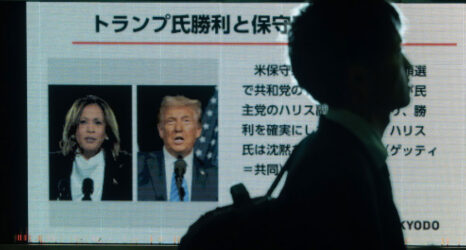Climate justice belongs in the classroom—including recognizing and teaching the contributions of Asian Americans and Asian immigrants working toward environmental justice.
There’s a cool new kid on the block. She’s a 7-year-old musician who plays the electric guitar and loves soccer. She wears an edgy denim vest with patches. She is Korean American and enjoys talking to her grandma in both Korean and English. Her name is Ji-Young, and she happens to be the first Asian American Muppet on Sesame Street.
Ji-Young’s debut on Sesame Street occurred on Thanksgiving Day in the “See Us Coming Together: A Sesame Street Special, and is connected to Sesame Street’s workshops for discussing racial justice, ethnicity and culture.
But this moment is bigger than a Muppet. Educational institutions and schools are finally establishing Asian American studies requirements. Asian American studies and ethnic studies are crucial for achieving climate solutions and working towards environmental justice.
Since the coronavirus pandemic began, there have been numerous reports about discrimination and violence against Asian Americans. The spike in hate crime attacks came with the xenophobic and racist rhetoric around the coronavirus pandemic from the Trump administration. According to the Pew Research Center, 32 percent of Asian adults fear threats and physical attacks. In May, President Biden signed legislation that addressed hate crimes against Asian Americans. Even Olympic champion Hmong American gymnast Suni Lee reportedly experienced a racist attack in Los Angeles.
This past summer, spearheaded by the organization Asian Americans Advancing Justice, Illinois became the first state to mandate teaching Asian American history when Governor J.B. Pritzker signed the Teaching Equitable Asian American History Act (TEAACH) into law, which takes effect in the
As an Asian American educator, when I think back on my own schooling, I don’t remember seeing myself or my experiences reflected in the curriculum. It wasn’t until I took ethnic studies classes in college that I even learned about Asian American history and radical women like Yuri Kochiyama, Grace Lee Boggs and Mine Okubo.
As an Asian American environmental educator, I don’t recall ever seeing myself in the mainstream environmental movement, and this is a common experience. This is a problem, as Asian immigrant and Asian American populations experience environmental injustices, care a lot about the environment and consider themselves environmentalists. With Asian American history and Asian American studies, we must also teach Asian American environmental histories of the past and present.
When I think back on my own schooling, I don’t remember seeing myself or my experiences reflected in the curriculum. … I don’t recall ever seeing myself in the mainstream environmental movement, and this is a common experience.
The First National People of Color Environmental Leadership Summit was held on October 24-27, 1991, in Washington D.C., and nearly 300 Black, Indigenous, Latinx, Pacific Islander, Asian American and other activists gathered to discuss the environmental injustices their communities were experiencing. The 17 principles of environmental justice they created are still relevant 30 years later. The principles articulated the interconnections between race and environmental injustices and highlighted that certain groups are more vulnerable to the effects of environmental degradation and climate change due to systemic racism.
The work from the summit continues today, and organizations such as the Bay Area’s Asian Pacific Environmental Network were established to organize and build power among Asian immigrant and refugee communities in the fight for environmental justice. Chicago Asian Americans for Environmental Justice is working to “center the people impacted by environmental injustice and aim to provide an Asian American voice in the environmental movement.” But where are examples like these in our schools and curriculum?
Been to a few rallies, protests and marches in my life. Wouldn’t have missed out the chance to speak up for myself. #StopAsianHate DC rally. #StopAAPIHate pic.twitter.com/FgkKcADFJJ
— Vicky Wang (@VickyAndiWang) March 21, 2021
The conservative fury over critical race theory continues, and anything related to teaching about racial inequities is used as a disinformation campaign to galvanize white voters. Most recently, North Dakoda’s HB 1508 achieved a 38-9 vote in the Senate and is headed for the governor’s desk. In Virginia, Glenn Youngkin has promised to ban critical race theory since day one. In New Hampshire, a terrifying system was established to turn in public school teachers who are suspected of violating the anti-divisive subject matter law, and a bounty has been offered as an incentive by Moms for Liberty. In this climate, how are teachers supposed to teach for racial and climate justice? Educators around the country are rising up in resistance and protests are determined to Teach The Truth.
True and just education requires that students see their lived experiences and realities reflected back to them. This means teaching everyone’s history, teaching hard history, not just teaching the histories of a privileged few. True climate justice requires interdisciplinary collaboration and helping students make connections between their lived experiences, realities and the world around them. To do this, we must integrate climate justice into the K-12 curriculum and teacher preparation programs. This includes recognizing and teaching the contributions that Asian Americans and Asian immigrants have made towards achieving environmental justice in their communities in the past and the present and also teaching intersectional narratives of climate change and climate justice.
Up Next:





